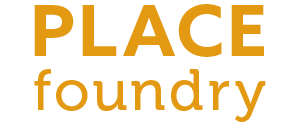Zero-sum vs. Ecosystem Thinking
Rapid change and anxiety can lead any individual, neighborhood, or city region to fall into the zero-sum game. Unfortunately, this is the challenge of our day. To thrive amid rapid swings in the marketplace, changing demographics, and critical natural resources are challenging but not impossible.
Places that will thrive beyond today will avoid the temptations of zero-sum thinking and behaviors. Rather than believing there are limited economic, social, and physical assets to go around, they will instead adopt ecosystem thinking and practices.
Place ecosystem mapping is the beginning of transformative growth in any neighborhood, district, or city region's economic, social, physical, and natural environments.
Mapping your assets and strengths reveals the challenges and opportunities to build better neighborhoods and districts. It provides a way forward to cultivate environments for people of all ages to knowledge build, figure out what they are good at, and produce something of value that you and I will benefit from. It fosters alignment of resources and communications that accelerate the reasons for why a business, resident, or stakeholder would choose to locate and invest in your community.
If you want to build sustainable marketplaces, neighborhoods, and structures, having a place ecosystem strategy is paramount to growth and success. The alternative is to continue poaching and doing things on the cheap. The short-term gain might be real. But the long-term payoff will cost you more businesses and residents escaping for opportunities and a better vibe elsewhere.
